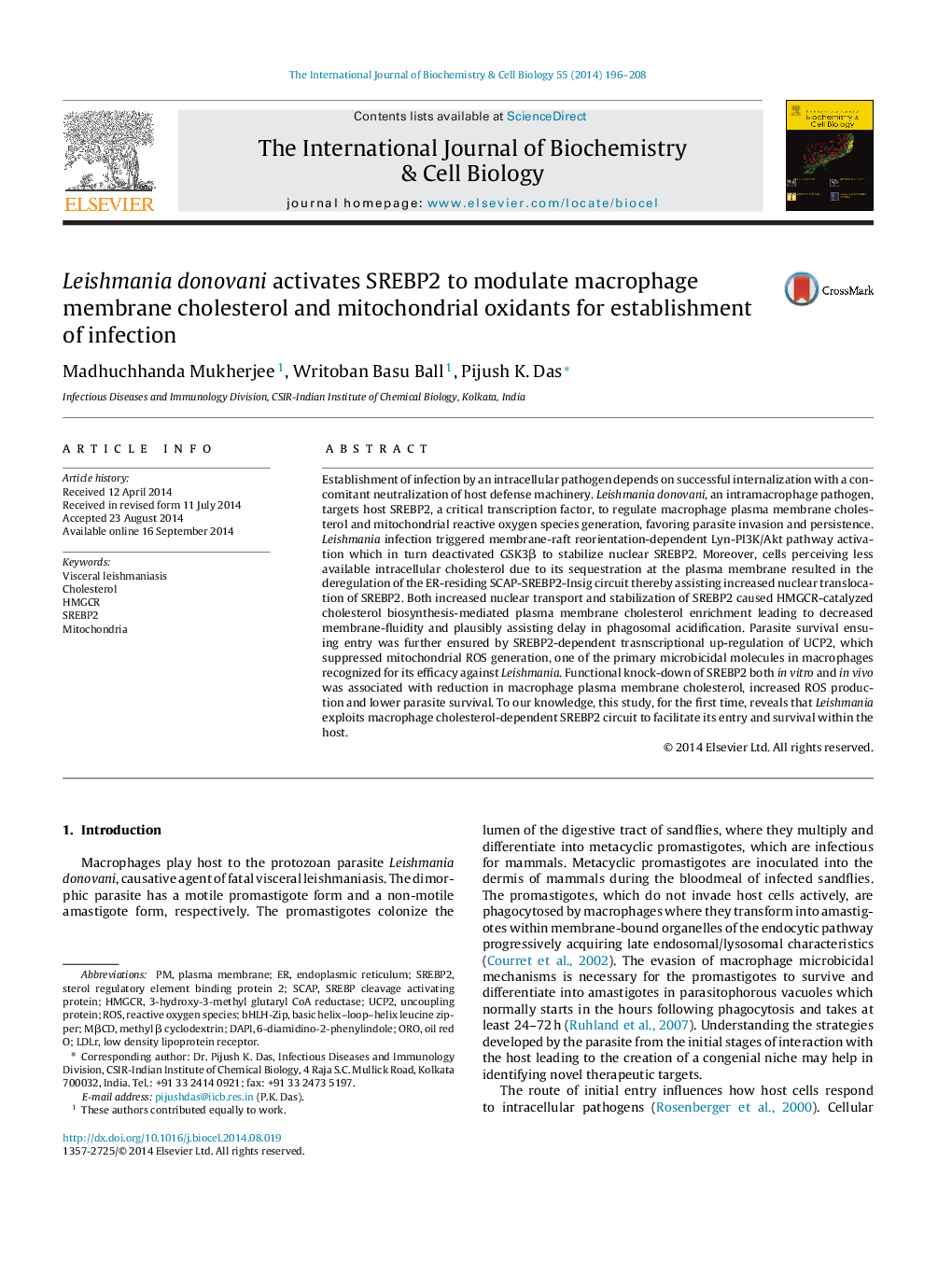| Article ID | Journal | Published Year | Pages | File Type |
|---|---|---|---|---|
| 8323062 | The International Journal of Biochemistry & Cell Biology | 2014 | 13 Pages |
Abstract
Establishment of infection by an intracellular pathogen depends on successful internalization with a concomitant neutralization of host defense machinery. Leishmania donovani, an intramacrophage pathogen, targets host SREBP2, a critical transcription factor, to regulate macrophage plasma membrane cholesterol and mitochondrial reactive oxygen species generation, favoring parasite invasion and persistence. Leishmania infection triggered membrane-raft reorientation-dependent Lyn-PI3K/Akt pathway activation which in turn deactivated GSK3β to stabilize nuclear SREBP2. Moreover, cells perceiving less available intracellular cholesterol due to its sequestration at the plasma membrane resulted in the deregulation of the ER-residing SCAP-SREBP2-Insig circuit thereby assisting increased nuclear translocation of SREBP2. Both increased nuclear transport and stabilization of SREBP2 caused HMGCR-catalyzed cholesterol biosynthesis-mediated plasma membrane cholesterol enrichment leading to decreased membrane-fluidity and plausibly assisting delay in phagosomal acidification. Parasite survival ensuing entry was further ensured by SREBP2-dependent trasnscriptional up-regulation of UCP2, which suppressed mitochondrial ROS generation, one of the primary microbicidal molecules in macrophages recognized for its efficacy against Leishmania. Functional knock-down of SREBP2 both in vitro and in vivo was associated with reduction in macrophage plasma membrane cholesterol, increased ROS production and lower parasite survival. To our knowledge, this study, for the first time, reveals that Leishmania exploits macrophage cholesterol-dependent SREBP2 circuit to facilitate its entry and survival within the host.
Keywords
MβCDbHLH-ZipSREBP cleavage activating proteinSCAPSREBP2OROUCP2DAPILDLRHMGCR6-diamidino-2-phenylindoleROSOil red Oendoplasmic reticulumPlasma membraneVisceral leishmaniasisMitochondriasterol regulatory element binding protein 2Uncoupling proteincholesterolReactive oxygen specieslow density lipoprotein receptor
Related Topics
Life Sciences
Biochemistry, Genetics and Molecular Biology
Biochemistry
Authors
Madhuchhanda Mukherjee, Writoban Basu Ball, Pijush K. Das,
